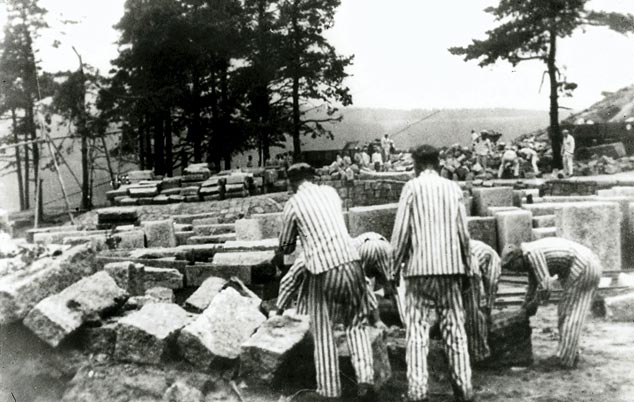
Vast amounts of stone and brick were needed for the Nazis' huge buildings, and were supplied by 280 companies. One such company was the German Earth and Stone Works, owned by the SS. Concentration camps, including Flossenbürg, Mauthausen, Gross-Rosen and Natzweiler-Struthof, were set up near quarries. There and in the associated stonemasonry operations, the company ruthlessly exploited the inmates' labor.
The National Socialists' system of concentration camps dates back to 1933. One year after that, the SS takes over control of the roughly 70 concentration camps that had been set up after the Reichstag fire. They are placed under Theodor Eicke, Commandant of the Dachau camp, who replaces them with a small number of large camps on the Dachau model. Living conditions at the camps he heads are extremely harsh. The "Disciplinary and Penal Code" includes a graduated system of punishments ranging from public whippings to execution. External guard is kept by armed SS units, known from 1936 on as "Totenkopfverbände," or "Death's Head Units."
The number of inmates fluctuates widely. At first, the camps mainly hold political prisoners. But from 1936 on, more and more members of marginalized groups and social minorities are confined in the camps – people who do not join the Nazi "Volksgemeinschaft" or who are to be excluded from it.
During the war, the system of concentration camps, with new external and incidental camps, spreads across German-occupied Europe like a cancer. Its function changes dramatically. Isolation of the inmates under the most severe conditions is joined by maximum exploitation of their labor for the armaments industry. New types of camps are added, especially the outright extermination camps and the forced labor camps to subject Jews to "annihilation through labor."
In January 1945, the regular concentration camps hold more than 700,000 people of almost every European nationality. (By contrast, the 21,500 inmates in 1939 were almost exclusively Germans or Austrians.) The death toll is extremely high because of the inhuman living and working conditions.



